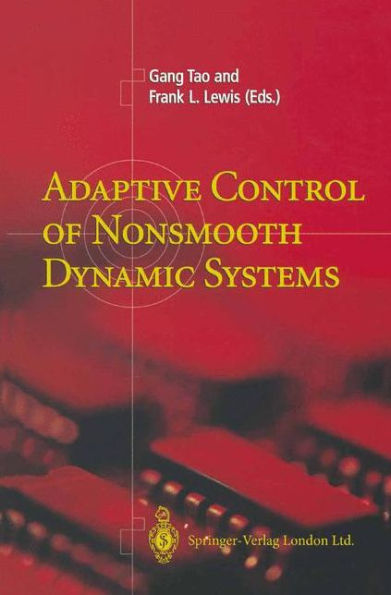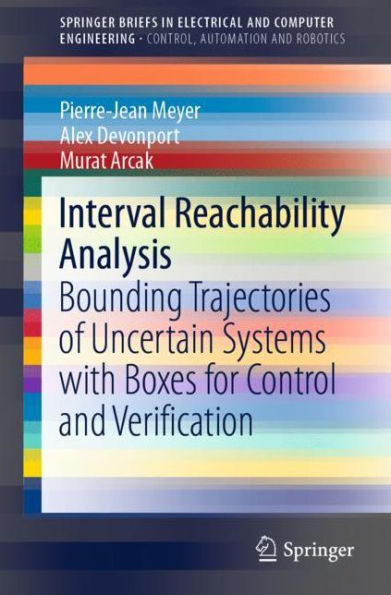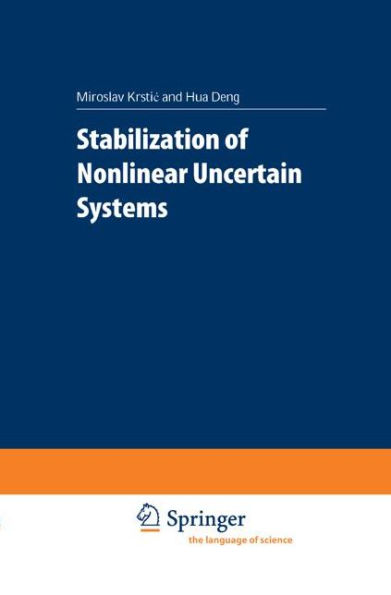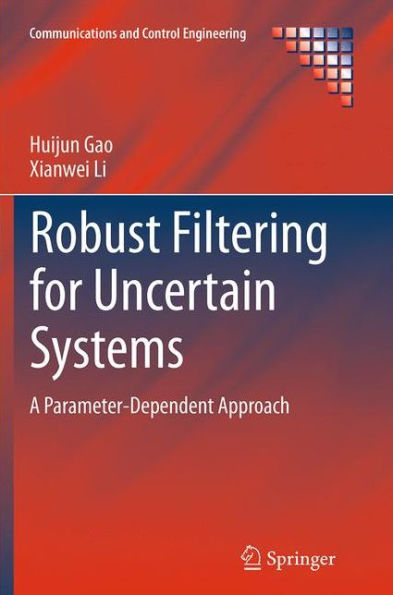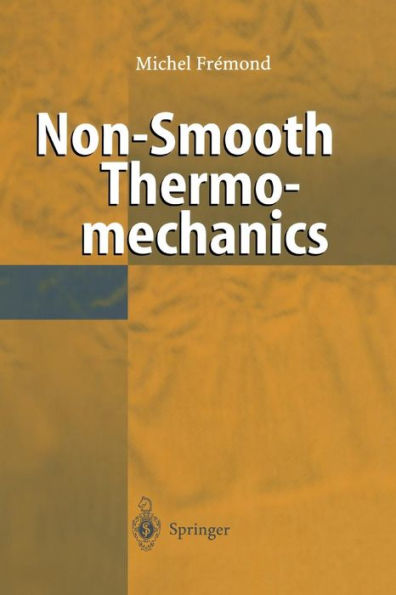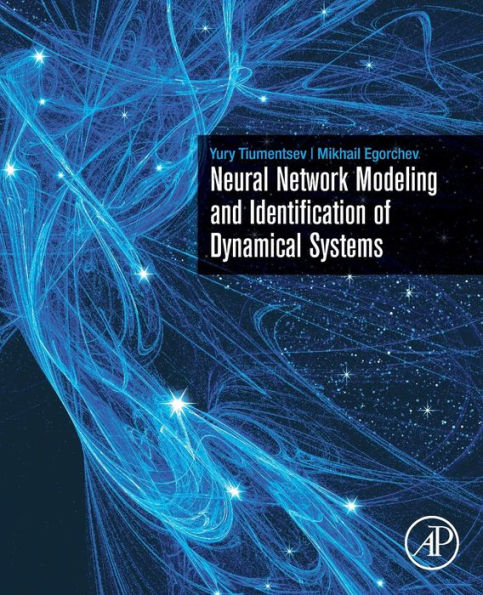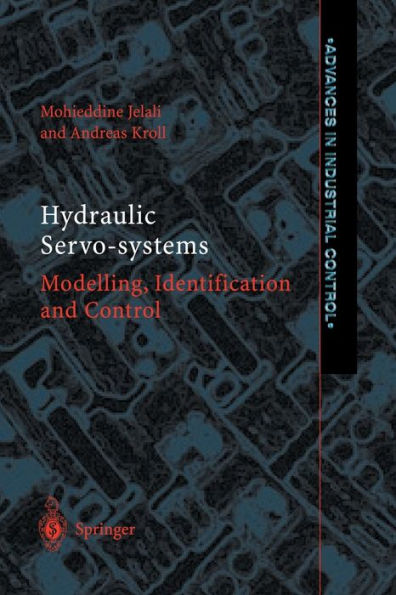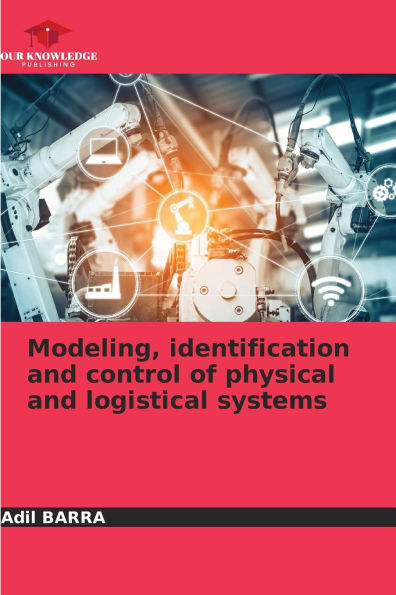Home
Adaptive Identification and Control of Uncertain Systems with Non-smooth Dynamics
Barnes and Noble
Loading Inventory...
Adaptive Identification and Control of Uncertain Systems with Non-smooth Dynamics
Current price: $160.00

Barnes and Noble
Adaptive Identification and Control of Uncertain Systems with Non-smooth Dynamics
Current price: $160.00
Loading Inventory...
Size: OS
*Product information may vary - to confirm product availability, pricing, shipping and return information please contact Barnes and Noble
Adaptive Identification and Control of Uncertain Systems with Nonsmooth Dynamics
reports some of the latest research on modeling, identification and adaptive control for systems with nonsmooth dynamics (e.g., backlash, dead zone, friction, saturation, etc). The authors present recent research results for the modelling and control designs of uncertain systems with nonsmooth dynamics, such as friction, dead-zone, saturation and hysteresis, etc., with particular applications in servo systems. The book is organized into 19 chapters, distributed in five parts concerning the four types of nonsmooth characteristics, namely friction, dead-zone, saturation and hysteresis, respectively. Practical experiments are also included to validate and exemplify the proposed approaches.
This valuable resource can help both researchers and practitioners to learn and understand nonlinear adaptive control designs. Academics, engineers and graduate students in the fields of electrical engineering, control systems, mechanical engineering, applied mathematics and computer science can benefit from the book. It can be also used as a reference book on adaptive control for servo systems for students with some background in control engineering.
reports some of the latest research on modeling, identification and adaptive control for systems with nonsmooth dynamics (e.g., backlash, dead zone, friction, saturation, etc). The authors present recent research results for the modelling and control designs of uncertain systems with nonsmooth dynamics, such as friction, dead-zone, saturation and hysteresis, etc., with particular applications in servo systems. The book is organized into 19 chapters, distributed in five parts concerning the four types of nonsmooth characteristics, namely friction, dead-zone, saturation and hysteresis, respectively. Practical experiments are also included to validate and exemplify the proposed approaches.
This valuable resource can help both researchers and practitioners to learn and understand nonlinear adaptive control designs. Academics, engineers and graduate students in the fields of electrical engineering, control systems, mechanical engineering, applied mathematics and computer science can benefit from the book. It can be also used as a reference book on adaptive control for servo systems for students with some background in control engineering.
Adaptive Identification and Control of Uncertain Systems with Nonsmooth Dynamics
reports some of the latest research on modeling, identification and adaptive control for systems with nonsmooth dynamics (e.g., backlash, dead zone, friction, saturation, etc). The authors present recent research results for the modelling and control designs of uncertain systems with nonsmooth dynamics, such as friction, dead-zone, saturation and hysteresis, etc., with particular applications in servo systems. The book is organized into 19 chapters, distributed in five parts concerning the four types of nonsmooth characteristics, namely friction, dead-zone, saturation and hysteresis, respectively. Practical experiments are also included to validate and exemplify the proposed approaches.
This valuable resource can help both researchers and practitioners to learn and understand nonlinear adaptive control designs. Academics, engineers and graduate students in the fields of electrical engineering, control systems, mechanical engineering, applied mathematics and computer science can benefit from the book. It can be also used as a reference book on adaptive control for servo systems for students with some background in control engineering.
reports some of the latest research on modeling, identification and adaptive control for systems with nonsmooth dynamics (e.g., backlash, dead zone, friction, saturation, etc). The authors present recent research results for the modelling and control designs of uncertain systems with nonsmooth dynamics, such as friction, dead-zone, saturation and hysteresis, etc., with particular applications in servo systems. The book is organized into 19 chapters, distributed in five parts concerning the four types of nonsmooth characteristics, namely friction, dead-zone, saturation and hysteresis, respectively. Practical experiments are also included to validate and exemplify the proposed approaches.
This valuable resource can help both researchers and practitioners to learn and understand nonlinear adaptive control designs. Academics, engineers and graduate students in the fields of electrical engineering, control systems, mechanical engineering, applied mathematics and computer science can benefit from the book. It can be also used as a reference book on adaptive control for servo systems for students with some background in control engineering.

